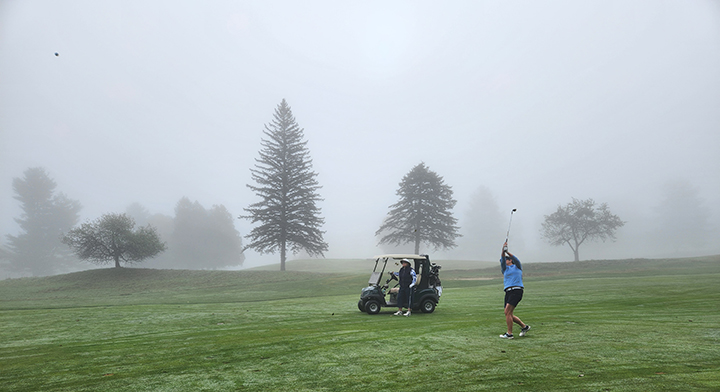Pace of play has significantly improved due to our focus on this over the past few seasons. Great job!
Thank you for your attention and adherence to Pace of Play expectations. Doing so will make each round enjoyable for all players and each host club. In general, each group should make the turn within two hours and finish within four hours.
Note that the registration description for each course states the expected time to complete 18 holes. Nearly all courses are playable within four hours and 15 minutes. A few longer or more challenging courses may list slightly longer round expectation times; some of the mountain courses list 4.5 hours playing time and Green Mountain National is listed as 5 hours playing time. We understand that this may seem fast but if all players and groups make the same effort to average 13 minutes from one tee box to the next, each State Day will move more quickly and be enjoyable for all participants.
Your correct position on the golf course is immediately behind and within sight of the group in front of you!
State Day Pace of Play Rules
Each player’s start and finish time will be recorded on the group’s scorecard. The finish time is recorded on the scorecard as soon as the group vacates the 18th hole. Players who finish 20 minutes or more behind the group in front of them will receive a warning via email after their first infraction. A second infraction will result in a “slow play designation” for the subsequent four weeks. A third infraction results in an additional eight weeks of “slow play designation.” If the player feels that there were extenuating circumstances not considered by the committee, they are encouraged to reply by email to provide detailed information. A “slow play designation” means that tee time reservations for State Days falling within the designated time period should only be reserved for one of the last four tee time slots for each specific event.
Players must understand that their pace of play affects all golfers playing in their group as well as those in the groups behind them. Accordingly, golfers should be prepared to play each shot promptly and move to the next tee box quickly after completing each hole. USGA Rule 5.6 encourages prompt play and ready golf, even playing out of turn, in a safe and responsible manner in order to save or make up playing time. Players are expected to complete their stroke within 40 SECONDS when it is their turn (5.6b). Time spent determining yardage and conditions will count as time taken for that particular stroke.
- Tips to Speed Up Play – Including “Split Up to Catch Up”
- No Card Option A wonderful way to speed up the round if you are having one of those days!
Helpful Video for Pace of Play: This video is highly recommended and includes an abundance of Pace of Play suggestions. In addition to other tips, the video shows timing for two different shot methods to demonstrate how you can save time on each shot. It was recorded prior to the reduction of 45 second to 40 second shot time, so please replace the 45 seconds with 40 seconds while watching.

